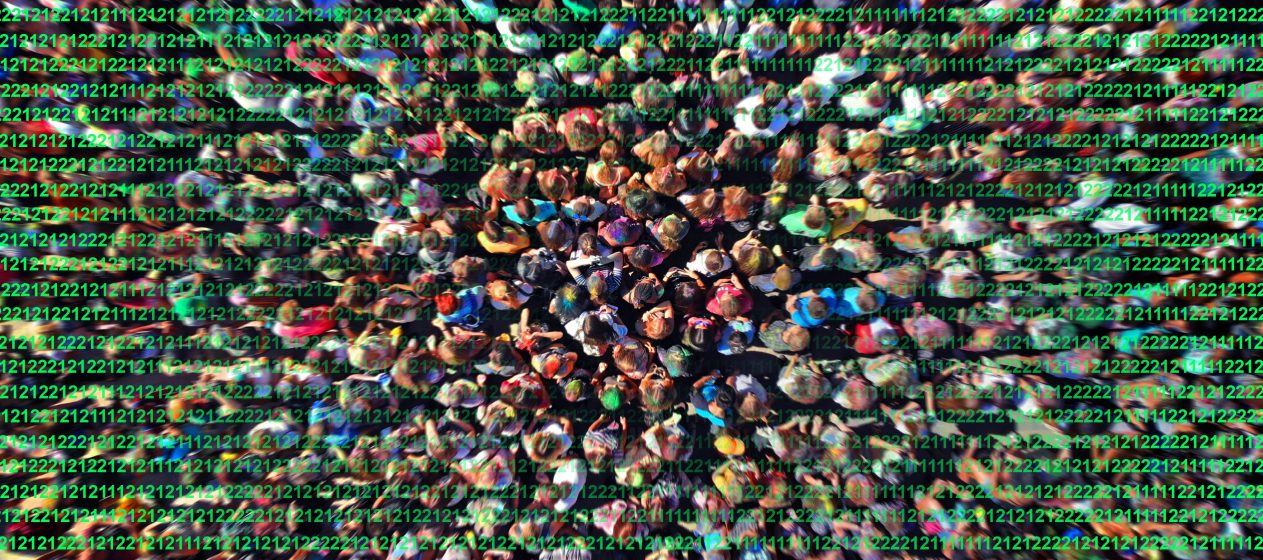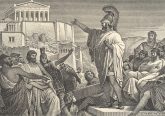I have had a laminated image pinned, stuck, or otherwise attached to various office walls for many years, since 2003 indeed, as I’ve moved between roles and institutions this has been one constant. The image is from the cover of Mute Magazine, Issue 26. It is a line drawing depicting a desk, on it a Macintosh PowerBook G4, Apple’s then state of the art portable computer – around it are drawn scenes from the global anti-capitalist struggles of the period. There is a picture of Sub-Commandant Marcos of the Mexican Zapatistas, in iconic balaclava, smoking a pipe and looking away into the mid-distance. There is another picture of workers in a field of GM crops, and one of a high-tech control room that looks much like it is depicting the ill-fated Chilean Cybersyn project. There are representations of objects scattered around, a Nokia 8110 – of the kind used by Neo in the first Matrix film – a miniature statue of liberty, a small toy of the robot ‘Bender’ from the animated series Futurama. This is a playful collection of icons, a spot of bricolage nicely capturing a period.
On reflection what I like about it is that evokes a certain structure of feeling – I felt it at the time and looking at the image sparks those emotional memories, something like hope, optimism, mixed with outrage. One of the elements that resonated at the time was the open laptop screen in the picture, with several floating open windows from the period’s MAC OS. The images on the screen echo and bleed into the ‘real’ ones around it – one desktop to another, the virtual opening, extending, and overlapping with the spaces of the concrete. These windows, creating a manifold experience, give the sense that there is something empowering about such extensions, not least a possible extension of consciousness. The user gets to operate outside their own immediate field of awareness, to split and refocus attention, to control space, to think, as the line goes ‘different’(ly). The open windows as extensions of consciousness was something reflected early in the history of digital media theory, accompanying the first home computers with GUIs.
This is a giddying and powerful potential, the re-tasking and subversion of sleek consumer products, combined with the networking capacity of the World Wide Web, with its user-friendly interface and infinite scalability. This combination offered a possibility for an exciting new political consciousness. 2003 was also the year in which Michael Hardt and Antonio Negri published their book, Multitude. Multitude is the name that Hardt and Negri gave to what they believed was a new political subject, the sum total of the networked masses, no longer either isolated individuals or anonymous subjects of block class solidarity, but singularities in tune. The multitude was empowered by networks and computers, marshalling the affordances of capital against itself, the true value creating element of the system – general intellect – at last realised in reflection on itself. This is what it felt like. When action met theory, this made it all seem all the more so as 2003 was also the year of massive global marches against the Iraq War. These built on years of the alter-globalisation movement, of the first huge World Social Forum in Porto Allegra in 2001, and of and the Battle of Seattle where Indymedia was born, and surely the evidence anyone needed for the multitude in action.
The horizontal networks powered forward beyond 2003. Though when the invasion of Iraq happened, and the great suffering inflicted became truly evident, there was definitely a wobble, anti-power started to look like it might be the wrong strategy. But then after the financial crash of 2008, and the wave of austerity that followed, came Occupy and the Indignados. Another wave of resistance that was fuelled by the Internet, but this time focussed on organising in space for long periods of time to capture and shape that space for the collective. The power of bodies and of affect meant the distributed intelligence and consciousness of the networks found their place in more concrete forms. The human microphone, the mass meeting, the gestures of agreement and dissent that allowed the crowd to find a self-consciousness.
Yet, a short five years on that started to look like a like a high-water mark, Donald Trump elected president of the USA, Brexit and waves of populism associated with the Alt-right – perhaps the roots of this contradiction are there all along, the Boston Bombing and crowd sourced mob of 2012, taking us towards the Capitol riots of 2020, COVID denial and anti-vax reaction. The rise of the far right and its associated beliefs and tendencies online has been one of the most striking political developments of the post-2008 financial crash. This movement has been characterised by the spread of ideas most aligned with Theodor Adorno’s notion of fascist propaganda, wherein the association of particular identities with hate and blame is based merely on repetition and thematic association, logic and substantive argument is long abandoned, the empty signifier of ‘woke’ used as a receptacle for all the bile – what we would today call a politics of negative affect. Though of course it is as well to remember that the Capitol riots happened in the wake of Trump being voted out of office the year before and can also be seen as a backlash against a resurgence of public reason.
These moments represent two dialectically opposed tendencies in digital consciousness. One of which is characterised by the process of aggregation rather than association, the submergence into a digital ‘mob’ that does not think in any sense beyond reflexive action. The other is characterised by networked association, reflection, and mutual recognition – manifesting a form of thinking together, for each other rather than merely by each other. While the former represents the divisive destructive tendencies of the digital, the latter offers hope.
I return to the image of the laptop acting as a hub for the activism around it, which speaks to a mindful consciousness that interlaces and expands the intelligence of the multitude. We have seen this manifest more recently in expressions of care and concern, in the #metoo movement and in #BlackLivesMatter. Yet politics is an agonistic pursuit, and such resonances still provoke divisions, which are the other side of solidarity. It seems that this will be the political dividing line for some time to come. There is already evidence to suggest a more reasonable and considered politics is again possible, not in the way of the anti-power but this time via actual political power. Grassroots support for Jeremy Corbyn in the UK and Bernie Sanders in the USA suggested a hunger for a fair and gregarious politics of compassion and recognition. In the UK in particular the evisceration and delegitimisation of Corbyn indicates the established power of a centralised media system still holds a significant of sway over public consciousness, certainly enough to disrupt and fragment the confidence, coherence and will of any movement. The power of agenda-setting and framing remain pivotal to electoral politics, and any new movement looking to generate collective political consciousness and exercise a collective will must find ways to counteract such disruption.
Any progressive collective consciousness must also navigate the systemic context of capital, wherein a public resource such as Twitter is always already constrained through ownership. Twitter’s purchase by Elon Musk demonstrates the dangers of relying on privately owned platforms to facilitate political and social movements, but also that private capital cannot simply do what it wants – as much as the bluster and rhetoric may suggest otherwise, given the reliance of these platforms on their users. We can see in numerous attempts to create alternatives such as Mastadon, MeWe and others, that moving off established platforms with multi-millions of users, to new alternatives – however positive the rationale and motivation – only ever works for a small minority. Tensions that exist between owners and opposing factions of users are likely to remain, unless much wider and more profound political change takes place, and the very logic of large-scale political use of social media is to achieve that aim.
There is an informative metaphor here between individual and group consciousness and the way the brain generates thought. There is a neuro-scientific theory that the deepest thought emerges at the brain’s most intra-connected moments, that as perceptions and fragments of experience coalesce into integrated circuits, connected via the brain’s long interregional neurons and axons, then deep thought and self-consciousness follow. The experience of focus and concentration, of extended conceptualisation and contemplation are enabled by these circuits. Yet these are easily disturbed and break down in response to more pressing demands on the brain’s resources, sudden changes in environment: noise, movement, anything that represents danger, a pressing demand, or an engaging distraction, dissolves the brain’s capacity to function as a whole integrated circuit. In the modern world such interferences often come in digital form – either visual or auditory, with phone alerts and email being particularly egregious culprits.
Group consciousness requires analogous elements, dense interconnections, continuous exchange, focus, shared awareness, and common goals – that is concentrated connectivity. The power to maintain these links or organise and coordinate coherent action is in many ways enhanced by digital technology. Think of Twitter with its capacity to enable coordination across distance in real-time, to facilitate deliberation, to find intellectual and political resonances, to pick up fellow-travellers using hashtags: thus, conjuring up huge constituencies of sympathetic and committed comrades. And yet, the opposing power to disturb is ever-present – to troll, to break and distress connections, to create noise via misinformation, to bombard networks of recognition with flak generated by armies of bots.
What we know, or I claim at least, is that the power of consciousness as a political force is undoubted and as such needs to be cultivated and not allowed to be fragmented and recuperated. Communicative action is vital, but not at all costs – antagonistic positions will always ensue, and at some point, lines of solidarity and action must be drawn up and the struggle for hegemony won or lost.







